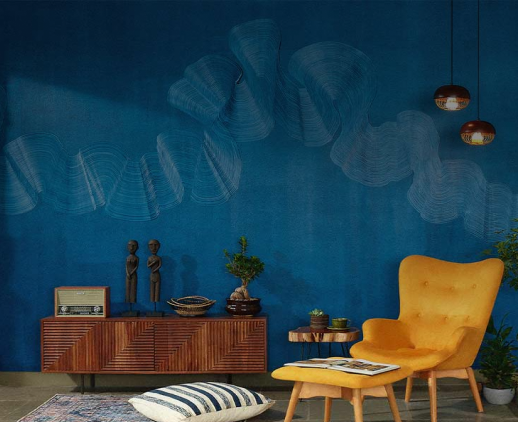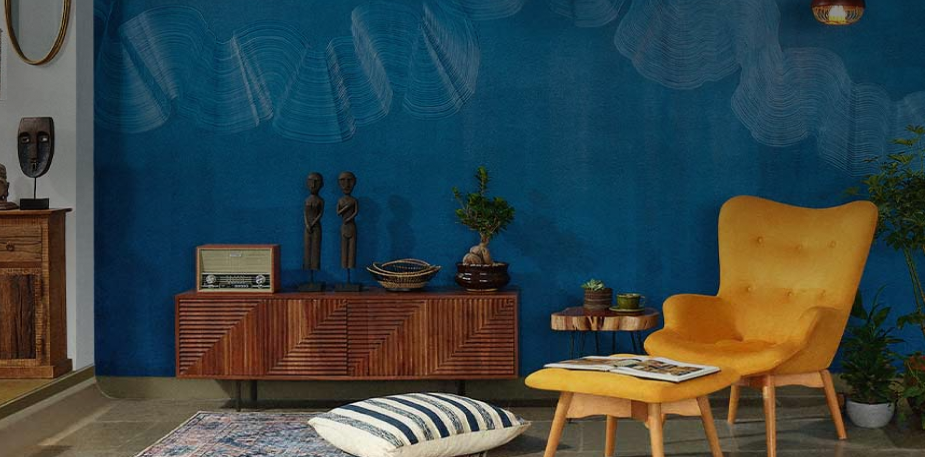Get your home interior design budget estimate
A modern bungalow becomes a store, studio and café for clothing brand Tilla

This week we visit designer Aratrik Dev Varman’s studio and cafe. He chose a 1970s-era suburban house as the location of his business, converting the space to reflect the minimalist, frugal, crafts-based elegance of his brand
Designer Aratrik Dev Varman is a Tripura-native who grew up in Chennai and now calls Ahmedabad home. It is to this city by the Sabarmati that he came to study at National Institute of Design and stayed on to create Tilla. It is now almost 10 years since he started the label, for which he intentionally—adamantly even—creates a limited amount of designs, using both Indian fine-fabrics like Jamdani and Chanderi, and ruddy ones such as Kora, all embellished lightly with traditional craft techniques.
When I first met him seven years ago, Tilla was run out of a former doctor’s clinic, barely 1,000 sq. ft in space. But as the label grew to encompass clothing, home linen, and wallpapers, the brand shifted to a building that could accommodate its burgeoning requirements plus a store and café. At the same time Aratrik converted the old studio into a perfect minimalistic home-for-one.
Keeping the Integrity of Old Structures
In the decades just following Independence, Ahmedabad like many cities in India, got a profusion of homes that looked modern but were strictly unadorned. Usually two-storey, rectangular and boxy, with mosaic floors, these buildings are as distinguishable as Amitabh Bachchan’s old white suit.
But what it lacks in external beauty these houses make up for in sturdy interiors. If left intact then there are impossible-to-recreate mosaic floors, sweeping staircases with wooden balustrades, and high ceilings for the discerning owner. Aratrik is exceptionally discerning, and for his new studio he chose to rent one of these nondescript suburban modern-era bungalows constructed in the 1970s. And more importantly, in keeping with his frugal, minimalistic philosophy, he’s retained the fundamentals of this home completely intact. The strength and integrity of the space comes from its original materials and it remains, only now it has a new context.
“Similar to my house, we started with the existing ecosystem; this is what you have to work with,” he says. That means the best inherited qualities of the home remain, including aforementioned mosaic floors and staircase. A two-storey building with 6,000 sq. ft of floor space, the front-façade has the little store and a portion of the cafe, with a dramatic backsplash of signature Tilla wallpaper.

The store and café reflect Aratrik’s Tripuri family background, via objects from Tripura based craftspeople and elements like the cane-work awnings.
Aratrik’s roots in the northeast are visible in custom-made bamboo and cane-work via furniture and the awning on the building. The store houses Tilla clothing and a small curated selection of products, while the café serves everyday fare, some Western some Gujarati, all unfussy and light, much like everything else about Tilla and its HQ.

The office/studio is a 1970s house that also functions as Tilla’s atelier, with its karigars.
Interior Lives
The offices, then tailoring and embroidery functions of the brand, are set throughout the first and second floors of the house. As you go up or down from one floor to the next, the most dramatic bit of the house keeps you company from the mezzanine: a wood-and-glass framed work-room.
Its only bit of decoration are rows of printing blocks on the wall. I wondered if it was a collection, though Aratrik doesn’t fit the archetype of a collector at all. “This house is owned by the family of a very important printmaker, Dayaram Prints, who had this whole collection of blocks.
Once we agreed that I would rent the space, he gave us the collection, and said you can use it. Since Tilla didn’t really need this type of print right away, we did the only thing we could do with it: catalogue and display it.” And so, this non-descript home’s association with design continues into another decade.
All images by Ishita Sitwala

Get Started with your interior design journey with us!
Speak to our design professionals
What’s the status of your home possession?
What’s the condition of your home/space?
Will you be living in your space during the renovation?
 Previous Question
Previous Question
Is your interior design budget over 4 lakhs?
 Previous Question
Previous Question
Book next available appointment slots with our experts!
Please Select Date and Day
 Previous Question
Previous Question

Something went wrong!
We were unable to receive your details. Please try submitting them again.

Appointment Scheduled!
Thank you for giving an opportunity to Asian Paints Beautiful Homes Service! Our Customer Experience Specialist will get in touch with you soon.
Appointment Date & time
Thank You!
Our team will contact you for further details.
What’s the status of your home possession?
What’s the condition of your home/space?
Will you be living in your space during the renovation ?
 Previous Question
Previous Question
Is your interior design budget over 4 lakhs?
 Previous Question
Previous Question
Book next available appointment slots with our experts!
DEC 2023
Please Select Date and Day
 Previous Question
Previous Question

Something went wrong!
We were unable to receive your details. Please try submitting them again.

Appointment Scheduled!
Thank you for giving an opportunity to Asian Paints Beautiful Homes Service! Our Customer Experience Specialist will get in touch with you soon.
Appointment Date & time
17 Oct 23, 03.00PM - 04.00PM














































